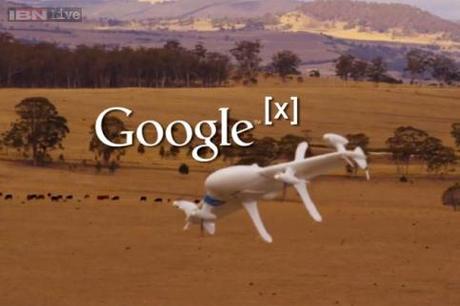
Image from ibnlive.in.com
Apart from being one of the best known and most widely used search engines today, Google is also a company that is constantly innovating. The latest endeavor is the delivery drone. Code-named Project Wing, it seems that this is the newest invention Google has been working on since the self-driving car.
Spearheaded by Google X, the company’s research and development lab, Project Wing was a recent revelation. Google X is also in charge of the Google Glass, the “smart glasses” and Project Loon, an effort to create “balloons” that float at the edge of the Earth’s atmosphere, bringing the Internet to the areas with poor connection. Originally Project Wing was an airborne ambulance, meant to bring defibrillators to those who had suffered heart attacks. However, the need to integrate the device with emergency services felt like an impediment to Google and, thus, Wing was never used as an emergency defibrillator.
Google recruited Nicholas Roy, an associate professor of aeronautics and astronautics at MIT, in July 2012 to help Project Wing take off (no pun intended) and, having since created a prototype, Roy is returning to MIT this month. There, he will be passing the torch to Dave Vos, a “veteran in automated aviation systems” who will keep the Project Wing flame alive by turning Roy’s prototype into a commercial product.
For now, the project is still in a “pilot” phase. Google confirmed that test flights began last year. The Wing was being tested in Australia, delivering small packages to farmhouses. With a height of two and half feet and a wingspan of five feet, these drones aren’t exactly miniscule. However, they still can’t carry huge items. The drones have space for packages in a gap in the middle of the wing. This is where the customer’s product is stored during the flight. The drone takes off vertically, with its single wing pointing to the sky. Once in the air, the wing turns into a horizontal position and the vehicle flies fast, more like an airplane than a hovering, helicopter-like drone.
Google aims to have the drones flying at altitudes of 130 feet to 200 feet once they become commercially available, a process that could take years. Precise navigation will be needed to pick the most efficient routes while controlling noise, respecting the privacy and safety of people on the ground, and delivering items to an area the size of a doorstep. The company hopes its drones will create new economic growth opportunities by moving goods around more efficiently. However, the Federal Aviation Administration stated earlier this year that autonomous drone delivery isn’t an option right now. Project Wing is being tested, but, until Google convinces the FAA to allow this possibility, the Wing may never actually become a reality.

